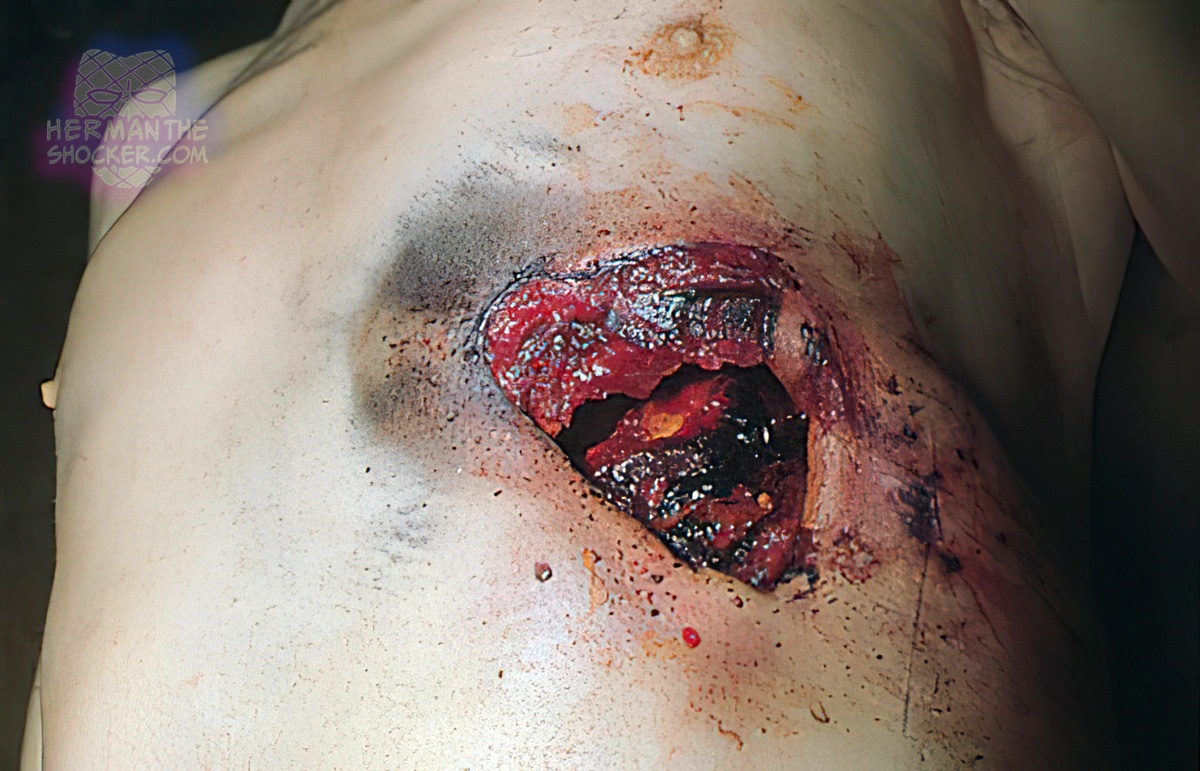Close discharge of a 12-bore shotgun to the chest. There is a large hole, partly due to disruption by gas, and no evidence of pellet scatter is seen. A close-range discharge of a 12-bore shotgun to the chest is almost always fatal due to massive tissue destruction, hemorrhage, and shock. At close range, the shot leaves as a concentrated mass, causing a large, gaping wound with severe cavitation. The impact leads to extensive rib fractures, lung lacerations, and heart damage. Soot deposition, powder tattooing, and wad imprints may be present. Hydrostatic shock can cause secondary internal injuries. Death is typically rapid due to exsanguination or cardiac trauma. Forensically, pellet spread, wad entry, and tissue damage help determine range, angle, and circumstances of discharge.
Latest posts








